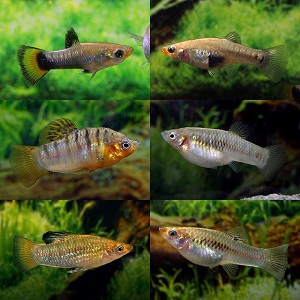The Evolution Highlights series highlights some of the interesting and varied papers published within the last few years in Evolution. The goal of these Evolution Highlights is to let our readers learn more about how the highlighted study came into existence, and to invite the authors to share stories and tips from the perspective of a recently published author. We welcome nominations and self-nominations for the Evolution Highlights. Find out how to submit a paper here.

In love and war: The morphometric and phylogenetic basis of ornamentation, and the evolution of male display behavior, in the livebearer genus Poecilia.
Goldberg, D.L., Landy, J.A., Travis, J., Springer, M.S. and Reznick, D.N.
https://onlinelibrary.wiley.com/doi/10.1111/evo.13671
Abstract:
Exaggerated male traits under sexual selection are often used for both competition and courtship, raising the question of whether ornaments evolved simultaneously for both functions, or if use in one context preceded use in another. Here, we apply a phylogenetic approach to study the evolution of ornamental dorsal fins in male poeciliid fish of the subgenera Mollienesia and Limia, which exhibit convergent development of an enlarged dorsal fin, and often direct erect‐fin displays to male and female conspecifics. Unlike prior categorical assessments of poeciliid adornments, we measure dorsal fin exaggeration with a continuous index of ornamentation. Phylogenetic logistic and generalized least squares regression analyses indicate that high index values are significantly associated with the use of two component postures of courtship and aggressive displays, dorsal fin erection and body curvature, but not with the presence of sexual dichromatism. Male displays initially evolved for male–male aggression in the common ancestor of Mollienesia and Limia, suggesting that this signal originated for competition, then became co‐opted for courtship. These results support the armament‐ornament hypothesis for evolution of exaggerated male traits, and are consistent with an evolutionary shift in the predominant mechanisms of sexual selection from intra‐ to intersexual.
Evolution Highlight by Daniel Lorenz Goldberg
School of Biological Sciences, Illinois State University

Courting Limia species